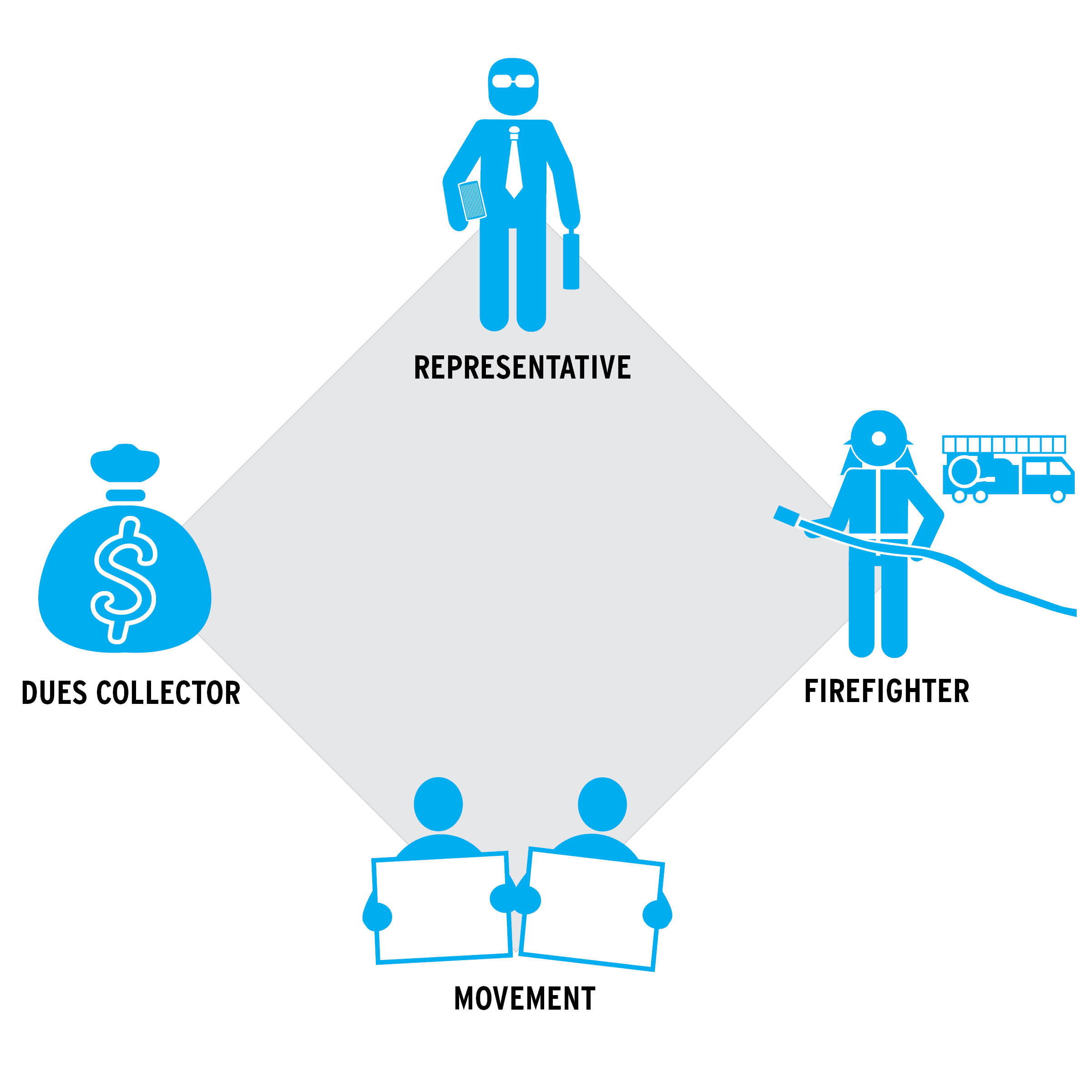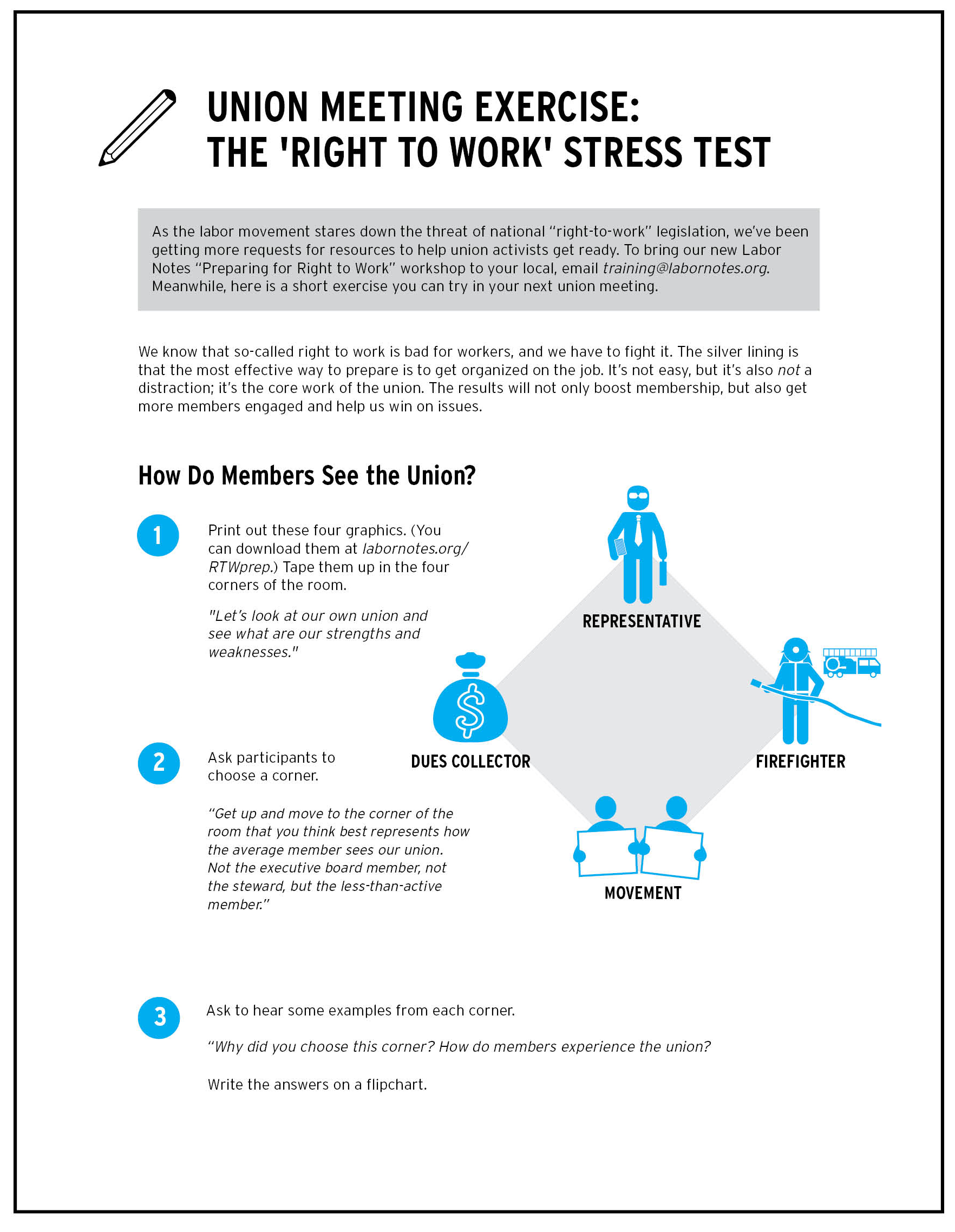Union Meeting Exercise: The Open-Shop Stress Test
Try this exercise in your next union meeting to start a conversation about how members see the union now.
Rebuilding Power in Open-Shop America
A Labor Notes Guide
labornotes.org/openshop
We know that so-called right to work is bad for workers, and we have to fight it. The silver lining is that the most effective way to prepare is to get organized on the job. It’s not easy, but it’s also not a distraction; it’s the core work of the union. The results will not only boost membership, but also get more members engaged and help us win on issues.
How Do Members See the Union?
1) Print out these four graphics. (Click here to download the graphics, along with these instructions.) Tape them up in the four corners of the room.

"Let’s look at our own union and see what are our strengths and weaknesses."
2) Ask participants to choose a corner.
“Get up and move to the corner of the room that you think best represents how the average member sees our union. Not the executive board member, not the steward, but the less-than-active member.”
3) Ask to hear some examples from each corner.
“Why did you choose this corner? How do members experience the union? Why?”
Write the answers on a flipchart.

SUPPORT LABOR NOTES
BECOME A MONTHLY DONOR
Give $10 a month or more and get our "Fight the Boss, Build the Union" T-shirt.
What Experiences Do Members Have with the Union?
4) Sum up the types of experiences you heard, and organize them into three categories: Negative, Transactional, and Inspirational.
Negative: The union is the organization that takes money out of my check.
Example: “When I called about a grievance, the union never called me back.”
Transactional: The union is the organization that negotiates our contract and health insurance. We pay dues and we get back our money’s worth.
Example: “The union bargained a raise for me.”
Inspirational: The union is our organization. My participation matters, and our power is collective—we all have each other’s backs.
Example: “We went on strike to defend our pension. We won by sticking together.”
5) Sum up:
“From the feedback in the room, it’s clear that many members recognize the good work unions do. But they still often view the union in transactional terms, where they pay dues and get something in exchange. Positive associations about the union usually fall between transactional and inspirational.”
How Can We Start to Transform Our Union?
6) Ask:
“Of the three types of experiences, what keeps members involved for the long haul?
Key Point
The fundamental task is to help members see the union as our organization, where our power comes from standing up together. How do we do that? The union has to have a visible presence in the workplace, and has to fight for things members care about.






